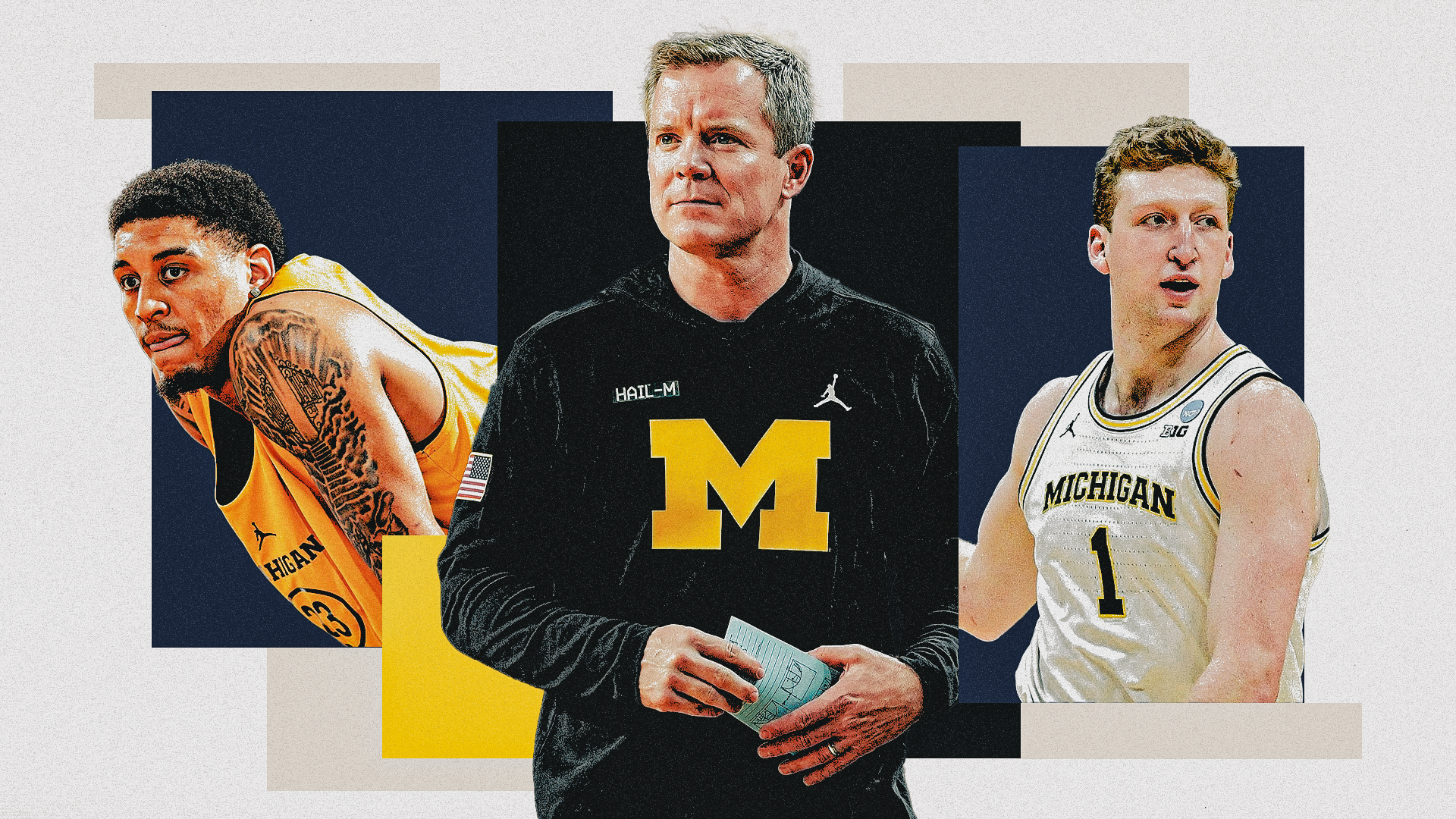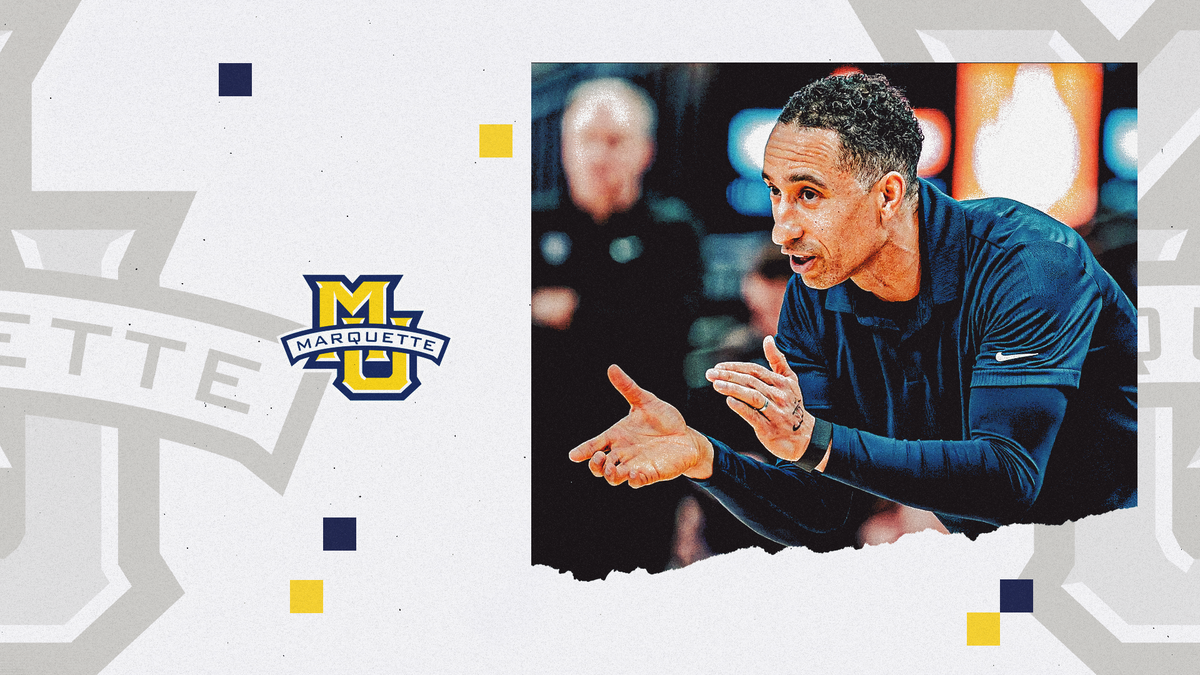When Danny Wolf declared for the NBA Draft this spring, the conversation in Ann Arbor immediately shifted. Not to whether Michigan could find another big man — there are always big men in the portal — but whether it could find anyone else capable of filling The Danny Wolf Role.
His presence last season under Dusty May was as central as it was unusual: a 7-footer who could stretch the floor, facilitate offense, and operate as comfortably on the perimeter as he did around the basket. The 4-5 pick-and-roll became such a talking point last season because Wolf was exceptional at operating it, and at how it helped the Wolverines exceed expectations in such a big way.
That skill set doesn’t grow on trees. And in a system like May’s, which leans heavily on spacing, tempo, and decision-making from every position, replacing it wasn’t going to be as simple as finding a talented big man. Players that can do all these things at 7-feet tall aren't just readily available.
Of course, Yaxel Lendeborg isn't just anybody.
Arguably the best transfer available this offseason, Lendeborg brings the same versatility that made Wolf such a unique fit in the first place. However, he pairs it with more efficiency, more athleticism, and more two-way polish. He doesn’t just tick the same boxes – he expands them. For all the justified praise Michigan received for getting a year out of Wolf, the Lendeborg addition might end up being the one that takes May’s system to another level.
Wolf’s lone season at Michigan was objectively successful. He averaged 13.2 points, 9.7 rebounds, and 3.6 assists per game, started all 33 contests, and led the Big Ten in double-doubles. He became the focal point of the offense — a 7-footer who shot 33.6 percent from three, passed out of the elbows, and helped elevate Michigan’s spacing in halfcourt sets. His assist rate (22.7) matched that of high-level wings, and his usage rate sat north of 25 percent. These weren’t empty touches – May trusted him to initiate, direct, and finish plays, and Wolf did so at a clip that turned him into a first-round NBA Draft pick.
But that trust came with tradeoffs. Wolf’s turnover rate (23.9) was high for anyone, something that may have been expected given what all he was asked to do. At Yale, Wolf had been more of a true post player who could stretch the floor, serving as a ball-handler just a fraction of the time. He was the ball-handler in just 21 pick-and-rolls during the entire 2023-24 campaign with Yale, per Synergy, while that number obviously skyrocketed with the Wolverines.
His offensive rating sat at 103.5 — not bad, but not elite. And while his feel on offense was clear, there were limitations on the defensive end, especially when asked to guard in space. That’s where opposing teams consistently tried to attack him, and in Big Ten play, they often found success. A handful of teams, particularly Michigan State and Oregon, had success pulling Wolf to the perimeter and forcing him to defend quick guards off the bounce. His instincts are fine, but the lateral recovery and agility just weren’t always there.
None of this is to say Wolf wasn’t good. He obviously was, and how May used his unique skill set helped maximize Michigan’s season. But Wolf wasn’t perfect — and for Michigan, the question heading into the offseason was about how to replace his production. Could they find another big that could easily be plugged into the same role? Or, to steal a phrase from Moneyball, would they have to replace that production in the aggregate?
Enter Lendeborg.
Last year at UAB, Lendeborg was dominant. He averaged 17.7 points, 11.4 rebounds, 4.2 assists, 1.8 blocks, and 1.7 steals per game. He was the AAC Player of the Year, a two-time Defensive Player of the Year, and statistically one of the most productive players in the country. He’s also one of only two players in Division I history to post 600+ points, 400+ rebounds, and 150+ assists in a season. The other? Larry Bird.
But raw production isn’t what makes Lendeborg the ideal fit – it’s how he produced.
Start with the efficiency: Lendeborg’s offensive rating was 123.7, a full 20 points higher than Wolf’s. I understand the difference in competition levels, but it’s also about 20 points higher than Wolf’s offensive rating at Yale (104.0). He posted a 54.8% effective field goal percentage and shot 36.2% from three, showing the ability to stretch the floor.
More importantly, his assist rate (22.9) was nearly identical to Wolf’s while his turnover rate (14.2) was dramatically lower. That kind of gap — nearly 10 percentage points — speaks not just to skill, but to processing speed.
In the below video, you can see Lendeborg’s passing ability on full display. Watch how quickly the ball leaves his hands when he draws two defenders. There’s no hesitation, no over-dribbling, no second-guessing. At UAB, the ball movement often started with him, and it rarely died there.
Dusty May sees it, too. He’s praised both players for their passing instincts and skill, but was clear this summer that Lendeborg’s feel might be even more natural. “He enjoys passing the ball,” May said. “When he draws two [defenders], the ball comes out of his hands, probably as well as anyone that we’ve recruited in the last several years.”
He also acknowledged how different things look in the Big Ten — a slower, more physical league than the American — and how Lendeborg’s speed and quickness might actually be an advantage. “At the Big Ten level, he’ll be defended by much bigger players a lot of the time. So he’ll be able to use his speed and his quickness,” May said. “We think he’ll be able to unlock some playmaking ability here.”
That last part is important: Michigan isn’t asking Lendeborg to be Wolf. They’re asking him to expand the role.
On defense, that may be where Lendeborg makes the biggest leap. His block rate (5.1) and steal rate (2.8) outpace Wolf’s and reflect his ability to make plays across all three levels. He’s a more agile lateral mover, better in transition, and more comfortable switching onto smaller players.
But perhaps the most compelling case for Lendeborg is how he impacts the rest of the roster. With Morez Johnson Jr. and Aday Mara also in the frontcourt mix, Michigan has more lineup flexibility than last year. Johnson’s physical playstyle perfectly complements Lendeborg, and will allow him to play more of a face-up game. He’ll be the 5-man in those 4–5 pick-and-rolls, be in the dunker spot and be asked to dominate the glass, all things he excelled at during his freshman season at Illinois.
Wolf's DBPR (Defensive Bayesian Performance Rating) nearly tripled at Michigan (1.30 at Yale to 3.41 with the Wolverines) for a few reasons, namely May's defensive scheme and Vlad Goldin's presence as another rim protector. He and Wolf essentially closed off the lane to opponents. Johnson and Mara both ranked in the top 45 nationally in DBPR last season, per EvanMiya.com, and are high level shot-blockers. The coaching staff is hoping those two, along with Lendeborg's versatility, will make them even better defensively, too.
Expect Michigan to lean heavily into that versatility. May has already said they’ve tested actions with Lendeborg initiating from the perimeter, running pick-and-pops, and triggering ball-screen sequences from unusual angles. He’s already going to be this team’s secondary playmaker, but it’s not hard to imagine lineups where Lendeborg operates as a de facto point forward while Elliot Cadeau is on the bench
The bigger story here isn’t just about who’s “better,” it’s about who fits. May found a way to use Wolf’s skills in a special way that proved to be a problem for the rest of college basketball. Lendeborg has already shown those same skills in a different system. In this system, in this role, he could become one of the sport’s most impactful and productive players.
There’s a parallel here to past mid-major stars who blossomed in the right environment. Think about how Johni Broome went from being a good player for Morehead State to first team All-American at Auburn, thriving as the anchor in Bruce Pearl’s high-octane system. Or how Dalton Knecht emerged as a star in a lead role after transferring to Tennessee. Heck, even Danny Wolf himself went from being a very good player at Yale to one of the Big Ten’s best because of his role.
We still need to actually see Lendeborg suit up for the Wolverines, but his analytical numbers at UAB were better than Wolf’s were in the Ivy League.
That’s not a slight to Wolf, but rather an endorsement of Lendeborg’s potential. He is the engine that is going to drive this team and has the ability to elevate everything his predecessor did.
If Michigan gets that – supercharged production from The Danny Wolf Role – there might not be a ceiling for what this team can accomplish.


